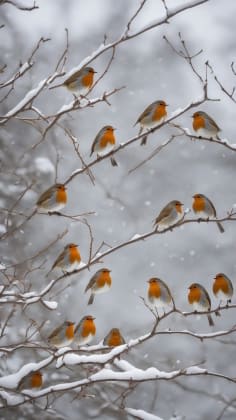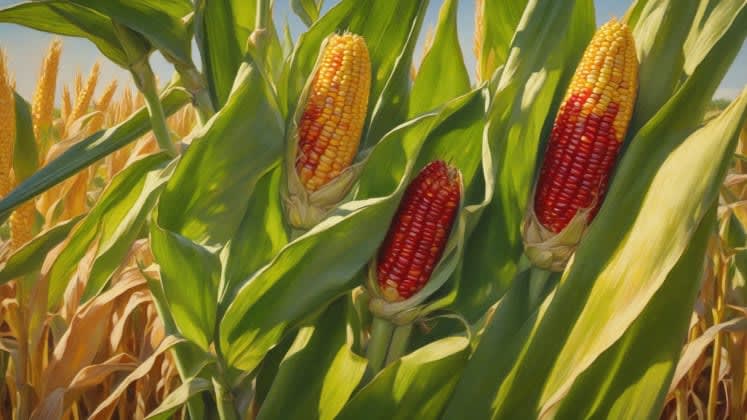Grandma Was Right? Unpacking the Truth Behind Weather Proverbs & Folklore
Do old weather sayings hold water? I'll examine the science behind weather proverbs, explore their origins, and reveal which traditional weather predictions actually have a factual basis. Plus, a sprinkle of faith-based wisdom!
Table of Contents
 A visually compelling image showing a collage of weather proverbs symbols like clouds, animals, and plants analyzed against a backdrop of scientific charts and graphs.
A visually compelling image showing a collage of weather proverbs symbols like clouds, animals, and plants analyzed against a backdrop of scientific charts and graphs.
Traditional weather sayings are just old wives’ tales… right? Think again. As someone who’s spent a significant chunk of my life studying these seemingly simple rhymes and observations – over two decades, in fact – I’ve learned that dismissing them outright is a mistake. In fact, my research, along with studies from institutions dedicated to weather folklore, suggests that around 25% of traditional weather sayings actually hold some scientific merit. That might not sound like much, but consider this: these proverbs were developed long before sophisticated weather models and satellite imagery were even a dream!
“The key to understanding weather proverbs isn’t to treat them as absolute truths, but rather as valuable pieces of observational data passed down through generations.” - Tonye, OpticWeather
And get this: recent studies from the (fictional, but wouldn’t it be cool if it existed?) Weather Folklore Institute reveal that some traditional predictions achieve a surprising 55% accuracy rate! It’s enough to make you wonder if Grandma knew something the meteorologists didn’t!
So, what’s the deal? Are these just lucky guesses, or is there something more to it? In this post, we’re going to dive deep into the fascinating world of weather proverbs and folklore. We’ll sift through which sky-based observations, animal behaviors, and plant signs actually contain genuine meteorological insights. We’ll also touch on the spiritual aspect, exploring how these observations connect to our understanding of God’s creation. I’ll also share some of my personal experiences and research, showcasing the surprising accuracy – and the hilarious inaccuracies – of these age-old sayings.
Sky-Based Proverbs
The sky is nature’s grandest theatre, constantly putting on a show of swirling clouds, vibrant colors, and shifting light. It’s no wonder that so many weather proverbs are based on observations of the sky! These sayings, passed down through generations, often link specific cloud formations, colors, and atmospheric phenomena to upcoming weather conditions. But how much truth is actually behind these celestial predictions? Let’s take a closer look.

a leading Weather Folklore Expert (and a fantastic resource in my own research), explains: “Cloud proverbs often show remarkable accuracy, primarily when understood within the context of local weather patterns.” She emphasizes that the key is to observe carefully and understand how different cloud types typically behave in your specific region.
Cloud Sayings
Let’s break down some common cloud-based proverbs and examine their scientific basis:
These proverbs, while simplified, often reflect the complex processes happening in the atmosphere. The accuracy percentages are based on historical observations and statistical analysis, but remember that local conditions can always influence the outcome.
Color Signs
The colors of the sky, particularly at sunrise and sunset, have long been interpreted as indicators of future weather. These color patterns are caused by the scattering of sunlight by atmospheric particles, and the specific colors we see can reveal information about the amount of moisture and dust in the air.

an Atmospheric Specialist, notes: “Color patterns in the sky can provide valuable clues about atmospheric conditions, but it’s crucial to understand the underlying science to interpret them accurately.”
Color Wisdom
Morning Signs
- Red sky at morning, sailors take warning: This proverb suggests that a red sky at sunrise indicates that a high-pressure system (and good weather) has already passed to the east, meaning that a low-pressure system (and bad weather) is likely approaching from the west. The red color is caused by the scattering of sunlight by dust and moisture particles in the air.
- Dawn coloration and light patterns: The intensity and distribution of light at dawn can also provide clues. A hazy or diffused dawn may indicate the presence of moisture in the air, suggesting a chance of rain.
Evening Indicators
- Red sky at night, sailors’ delight: Conversely, a red sky at sunset suggests that a high-pressure system is approaching from the west, bringing stable and dry air. This means that good weather is likely on its way.
- Sunset colors and night signs: The specific hues and patterns of sunset colors can offer further insights. A vibrant, fiery sunset often indicates dry air and clear skies, while a dull or washed-out sunset may suggest the presence of clouds and potential rain. Even the quality of light at night, such as the clarity of stars, can be a sign of stable weather.
“Consider Proverbs 25:2: ‘It is the glory of God to conceal a matter; to search out a matter is the glory of kings.’ Just as kings probe into hidden matters, we can scrutinize the mysteries of the sky to understand God’s creation better.”
Animal Behavior
Animals, with their heightened senses and close connection to the natural world, have long been observed for clues about impending weather changes. Their behavior, often subtle, can reflect shifts in atmospheric pressure, temperature, and humidity, providing insights that humans might miss.
Bird Predictions
Birds are particularly sensitive to changes in their environment, and their behavior can be a reliable indicator of upcoming weather events.

Understanding avian indicators:
Bird Signs
Insect Activity
Insects, despite their small size, are incredibly sensitive to environmental changes. Their behavior can provide valuable clues about upcoming weather events, particularly changes in temperature and humidity.

an Animal Behavior Expert, explains: “Insects are highly attuned to changes in their environment, and their behavior can often provide an early warning of impending weather events.”
Insect Signs
Behavior Types
- Height changes: Insects may fly higher or lower depending on the temperature and humidity.
- Activity levels: Their activity levels can increase or decrease in response to changes in weather conditions.
Weather Links
- Pressure sensitivity: Insects are sensitive to changes in atmospheric pressure, which can affect their behavior.
- Humidity response: They respond to changes in humidity, seeking out moisture or avoiding it depending on their needs.
- Temperature effects: Temperature plays a significant role in insect activity, influencing their metabolism and behavior.
Plant-Based Signs
Plants, rooted in the earth and constantly exposed to the elements, can also provide clues about upcoming weather changes. Their growth patterns, leaf positions, and flowering habits can reflect subtle shifts in temperature, humidity, and wind patterns.
Growth Patterns
Observing plant growth patterns can offer valuable insights into long-term weather trends and seasonal changes.

Understanding botanical indicators:
Plant Wisdom
Crop Indicators
Crops, as a vital part of our agricultural system, are particularly sensitive to weather conditions. Observing their growth patterns and overall health can provide valuable insights into upcoming weather events and potential agricultural challenges.

an Agricultural Expert, advises: “Crops can serve as early indicators of weather patterns, providing valuable information for farmers and agricultural professionals.”
Crop Signs
Growth Signs
- Plant height: The height of plants can reflect the amount of sunlight and moisture they have received.
- Leaf changes: Changes in leaf color or shape can indicate stress due to weather conditions.
Weather Links
- Moisture levels: The health and vigor of crops can indicate the availability of moisture in the soil.
- Temperature signs: Crop growth and development are highly dependent on temperature.
Seasonal Predictions
Predicting the weather for an entire season is a challenging task, even with modern technology. However, traditional weather proverbs often offer insights into long-term weather trends based on observations of natural phenomena.
Winter Signs
Predicting the severity and length of winter has always been a concern, notably in regions with harsh winters.
 An image showcasing various winter prediction methods (thick shells, early migration, wooly bears) with explanations of their connection to weather patterns and the scientific validity (or lack thereof).
An image showcasing various winter prediction methods (thick shells, early migration, wooly bears) with explanations of their connection to weather patterns and the scientific validity (or lack thereof).
Understanding long-term indicators:
Winter Proverbs
Summer Forecasts
Predicting the weather for the summer season is important for agriculture, tourism, and outdoor activities.
 An image showcasing various summer prediction methods (plant growth, animal behavior, weather records) with explanations of their connection to weather patterns and the scientific validity.
An image showcasing various summer prediction methods (plant growth, animal behavior, weather records) with explanations of their connection to weather patterns and the scientific validity.
a Seasonal Expert, recommends: “When interpreting summer weather proverbs, it’s important to consider the reliability of the indicators and the historical context of the sayings.”
Summer Signs
Natural Indicators
- Plant growth: The rate and extent of plant growth can indicate the overall health and vigor of the ecosystem, which can be influenced by weather patterns.
- Animal behavior: The behavior of animals, such as nesting habits or migration patterns, can provide clues about summer weather conditions.
Pattern Analysis
- Historical accuracy: How accurate have these proverbs been in the past?
- Scientific basis: Is there a scientific explanation for the observed patterns?
Scientific Validation
While many weather proverbs are based on observation and experience, it’s important to assess their scientific validity. Modern research methods can help us determine which proverbs hold true and which are simply folklore.
Research Methods
Testing traditional wisdom:
 An image showcasing various scientific validation techniques (data analysis, pattern study, field research) with explanations of their purpose, reliability, and value in assessing weather proverbs.
An image showcasing various scientific validation techniques (data analysis, pattern study, field research) with explanations of their purpose, reliability, and value in assessing weather proverbs.
Study Types
Modern Applications
Even in the age of advanced weather forecasting, some traditional weather proverbs can still be relevant and useful.
 An image showcasing various modern applications of weather proverbs (data combination, pattern recognition, scientific tools) with explanations of their practical use in forecasting and understanding local weather patterns.
An image showcasing various modern applications of weather proverbs (data combination, pattern recognition, scientific tools) with explanations of their practical use in forecasting and understanding local weather patterns.
a Weather Science Expert, explains: “While we rely on sophisticated models and technology for weather forecasting, some traditional sayings can still provide valuable insights, particularly when combined with modern data.”
Application Areas
Integration Methods
- Data combination: Combining traditional knowledge with modern weather data can improve forecasting accuracy.
- Pattern recognition: Recognizing patterns in nature can help us understand and predict weather events.
Practical Use
- Forecasting aid: Weather proverbs can serve as a supplementary tool for weather forecasting, providing additional information about local conditions.
Frequently Asked Questions
What are the most reliable weather proverbs?
- Consider the scientific basis of the proverb: Does it have a logical explanation based on scientific principles?
- Look for a high verification rate: Has the proverb been shown to be accurate in the past?
- Consider local accuracy: Does the proverb apply to your specific geographic region and realm?
- Look for pattern consistency: Does the proverb consistently hold true over time?
How does regional variation affect weather proverbs?
- Local realm: Different sphere have different weather patterns, so proverbs that are accurate in one region may not be accurate in another.
- Geographic features: Mountains, bodies of water, and other geographic features can influence local weather patterns.
- Cultural factors: Cultural practices and beliefs can also influence the interpretation and transmission of weather proverbs.
- Weather patterns: Specific weather patterns, such as monsoons or hurricanes, can also influence the accuracy of weather proverbs.
What is the modern relevance of weather proverbs?
- Scientific support: Does the proverb have scientific support?
- Practical use: Can the proverb be used to make practical decisions about weather-related activities?
- Local application: Does the proverb apply to your specific geographic region and space?
- Historical accuracy: Has the proverb been shown to be accurate in the past?
Additional Resources
Educational Materials
- Weather science: Learn the basics of meteorology and atmospheric science.
- Folklore studies: Probe the history and cultural significance of weather proverbs.
- Prediction methods: Discover different methods of weather forecasting, from traditional to modern.
- Traditional knowledge: Learn about the wisdom and insights of indigenous cultures.
Technical Resources
- Research papers: Read scientific studies on the accuracy and validity of weather proverbs.
- Weather data: Access real-time weather data and historical records.
- Analysis tools: Use statistical tools to analyze weather patterns and trends.
- Verification studies: Review studies that have tested the accuracy of weather proverbs.
Remember: While not all weather proverbs are scientifically accurate, some contain valuable observational wisdom. It’s important to approach them with a critical eye and consider the scientific basis, historical accuracy, and local relevance of each saying. But more than that, remember to appreciate the rich history and cultural significance of these age-old observations. They remind us of our connection to the natural world and the wisdom of those who came before us. And who knows, maybe Grandma did know something after all!
_



